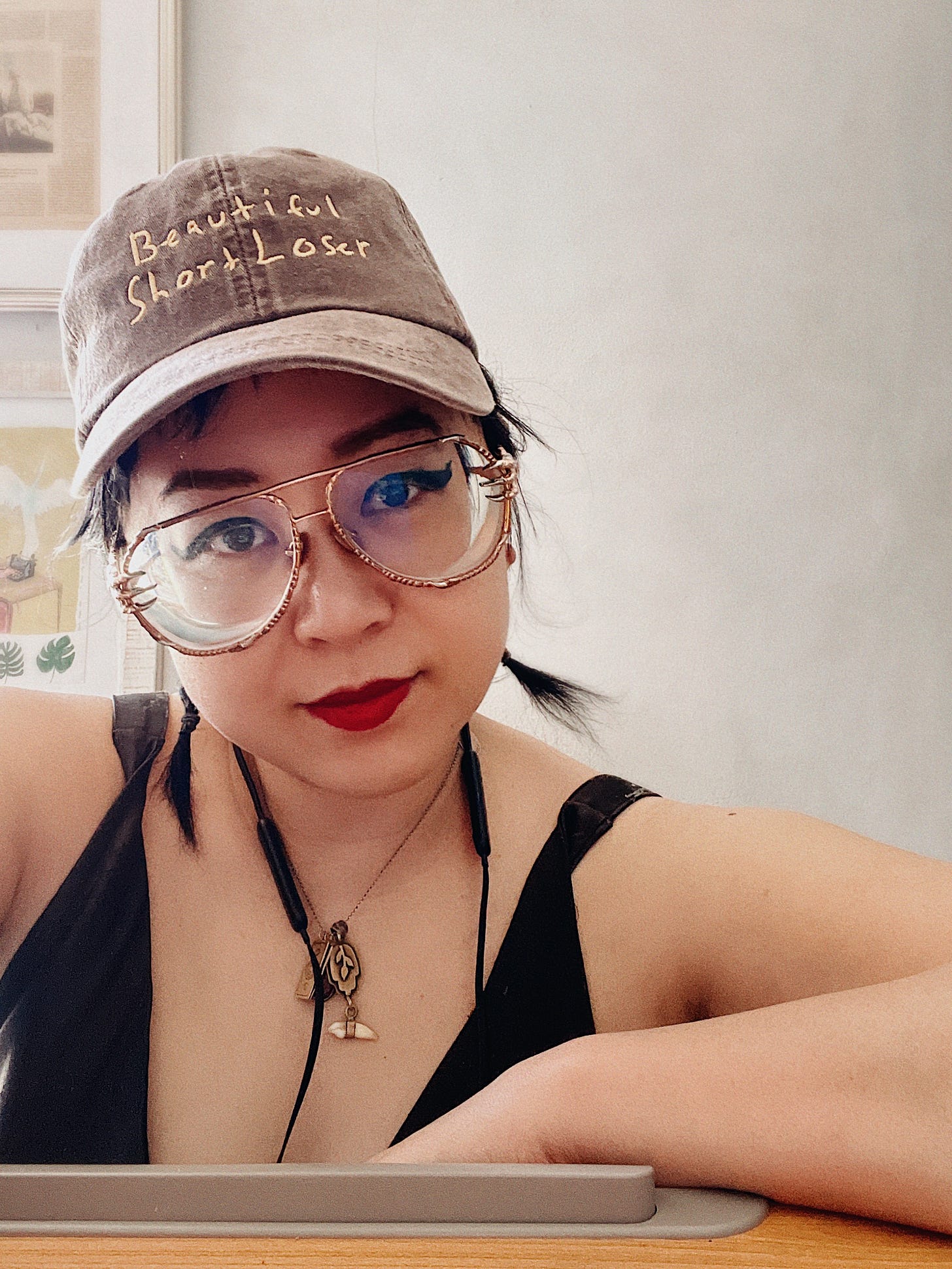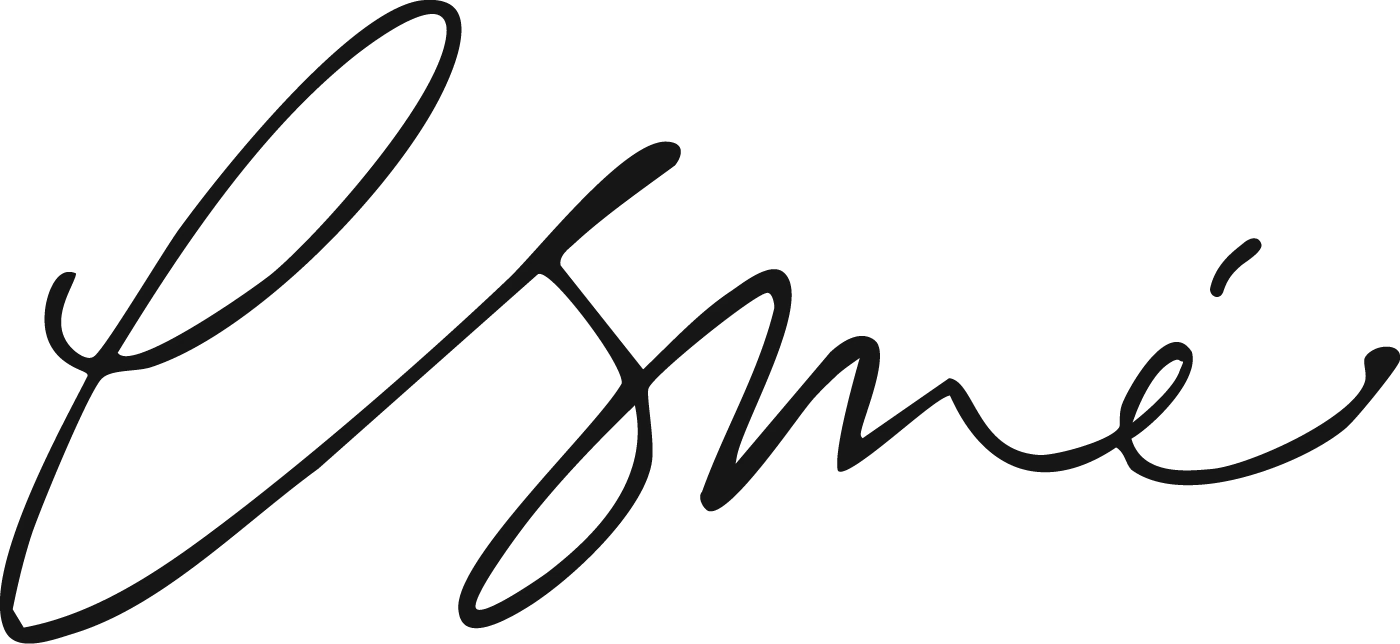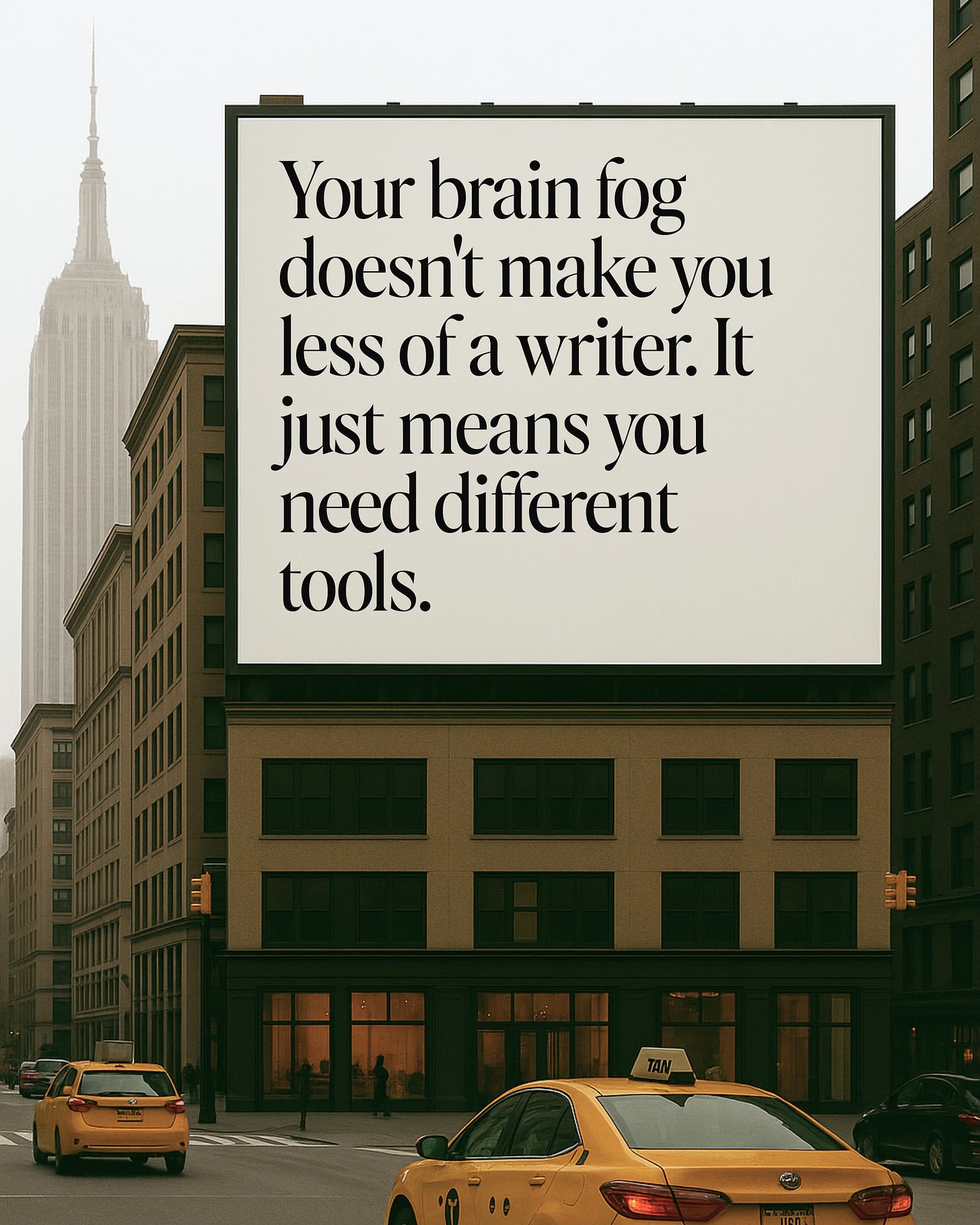GAY HAIR & A BASEBALL CAP
happy pride 🌈🌈🌈
I was genuinely thrilled when I got the notification that I'd been picked as one of ten people to win a gift pack from Penguin Press for Ocean Vuong's new book, The Emperor of Gladness. Beyond thinking Ocean is a beautiful poet and marvelous thinker, there's also the fact that when I interviewed actor Andrew Garfield, he mentioned hearing Ocean in an On Being interview and deciding he would marry the woman with that voice who was saying those profound things about grief—only to discover Ocean is a man.
But what I truly coveted from this gift pack was the baseball cap. Embroidered with Ocean's handwriting, it reads "beautiful short loser." (See above.) It might be the best hat I've ever seen in my life. And yes, I'm someone who owns one of those Sally Rooney Beautiful World, Where Are You bucket hats (which I actually quite dislike but am keeping because I imagine it will be worth a million dollars someday, like one of those doofuses from the early 90s who got deeply into Beanie Babies).
These days, my inclination is to wear my hair in two tiny braids with a weird updo on top—a variation of a hairstyle I had in college, back when my hair was down to my shoulders as it is now. I've had a blonde pixie cut for ages, but lately, the tiny braids feel right.
Yesterday, I was wearing this exact combination—tiny braids and the Ocean Vuong baseball cap—while friends came over to play mahjong. I was exuberantly talking about my small braids when my friend Andi, a fellow bisexual who is particularly insightful about my queer inclinations, said something like, "Very gay."
I wasn't completely aware of the homosexual vibe of tiny braids, but I was delighted by the observation.
"Happy Pride," she said right after identifying the gayness of my hairstyle.
"There's also the baseball cap to go with it," I added.
"Oh yeah," she said. "Mega gay. Like, it's a real look."
This is why I love my friends.
This is also why I'm grateful that I seem to be coming out of the depression I was in for several months. The higher dose of Effexor is working, I think. There's something profound about being seen and celebrated by people who know you well—especially when you're emerging from a period where seeing yourself feels impossible.
What I need next is to find the momentum to work on my book. I've tried everything to make my office the most beautiful space it can possibly be, including creating what I call my "book altar” and filling it with pothos plants. But I still long, deeply, for the chance to go to a writing residency.
I did recently find out that I was accepted to the Steepletop element of the Millay Arts residency; the organization offered me a space from July 30th to August 30th. The catch? I'd have to pay $4,000.
I'm not accustomed to paying for residencies. Most of the time, they're fully funded, which I think is ideal—especially since most writers don't have $4,000 sitting around waiting to be spent on such things. But I do feel like it's significantly harder to work on my novel at home. I used to go to residencies every year until C’s cancer diagnosis in 2023.
At a residency, you're essentially being told that you're there for a job. You have to do it. No one is distracting you, and you spend most of your time in solitude, except for the hour or so you spend having dinner with your fellow artists.
I love residencies precisely for this reason. I like interacting with artists, but as I explained in my last Substack post, I also love solitude. I love solitude so much that it feels like a significant part of who I am.
I keep trying to figure out how I can get that money so I can go and get this book done. If any of you have any ideas, please let me know.
Or if somehow the class I'm offering right now (Writing Through Brain Fog: Cognitive Strategies for Memoir) manages to sell enough spots to pay for the residency, I'll use that money to do exactly that. The class is currently close to being sold out of early bird spots. It's $77 for an early bird spot, $97 for a regular spot, and $297 for a VIP spot. (See below for more information about this class, which I’m convinced is going to be extremely useful for my students)
What I need is about forty spots sold, give or take.
Do you think I can make it? We'll see.
But in the meantime, I'll be here in my tiny braids and Ocean Vuong hat, looking very gay and feeling grateful for friends who see me clearly, antidepressants that work, and the persistent dream of uninterrupted writing time.
Sometimes the path forward appears in small increments: a compliment on your hair, a perfect baseball cap, the slow lifting of a yellowy, depression-shaped smog. Sometimes it's enough to trust that momentum builds from these tiny recognitions of who you're becoming.
If you're interested in joining my writing class or have thoughts about residency funding strategies, I'd love to hear from you in the comments. And if you happen to see someone in tiny braids and an Ocean Vuong hat around San Francisco, say hello—it's probably me, still figuring out how to write this book.
Brain fog isn't a character flaw, and it doesn't make you less of a writer.
If you've ever stared at a half-finished sentence, unable to remember where you were going with it—or opened a document only to feel like your thoughts are moving through molasses—I see you.
I've been there. Lying in bed with my phone, trying to capture an idea before it dissolves. Rereading the same paragraph three times because the words won't stick. Feeling like my mind has been wrapped in cotton wool.
That's why I created Writing Through Brain Fog: Cognitive Strategies for Memoir—a gentle, practical class for writers navigating cognitive challenges.
We'll explore:
How to build a "re-entry system" that eliminates the disorientation of returning to your work
Adapting traditional writing advice for different cognitive states (because "just push through" is terrible advice)
Practical tools for capturing ideas when executive function is low
Creating narrative anchors that maintain story coherence across interrupted sessions
📅 Date: Saturday, July 12th, 2025
⏰ Time: 11:00 AM - 12:30 PM PST (1 PM - 2:30 PM EST)
💻 Format: Live online workshop via Zoom
♿ Accessibility: Closed captions, recording available, cameras optional
📍 Where: From wherever you're comfortable (bed, couch, desk—your choice)
And you’ll receive:
✅ 90 minutes of practical, tested instruction (no fluff, all actionable)
✅ Comprehensive workbook with all templates and tools (lifetime access)
✅ Workshop recording within 24 hours (with captions and transcript)
✅ Private Skool community for ongoing support
Can't make it live? You'll receive the recording and all resources to explore at your own pace. This class is designed to accommodate your reality, not fight against it.
This isn't about overcoming your brain fog or pretending it doesn't exist. It's about honoring your reality while still creating meaningful work. Your cognitive symptoms aren't obstacles to overcome—they're part of your unique creative process. Let's figure out how to work with them.
Some early bird spots remain at a lower price of $77. Regular price spots are avialable at $97. And you can learn about the VIP spots at the link—I promise, it’s a nice addition if you have the coin. (If you’re not interested in the class, please consider sharing it with someone who might be, or to your audience in general. I’m still crossing my fingers that I might be able to go to that residency.)








"very gay <3"
State-specific art councils will often have grant programs for artists pursuing professional development, and some of those can be applied to travel and residency fees.
I love the hair and that CAP. I get a new fun kinda gay cap every summer. Last year it was “I am the Eldest Boy” cap from read receipts, this year debating one that says Hot Dogs from q local shop or something else from Chantal. I want to do this class so pray/hope/do a spell that I get enough freelance and *influencer* work